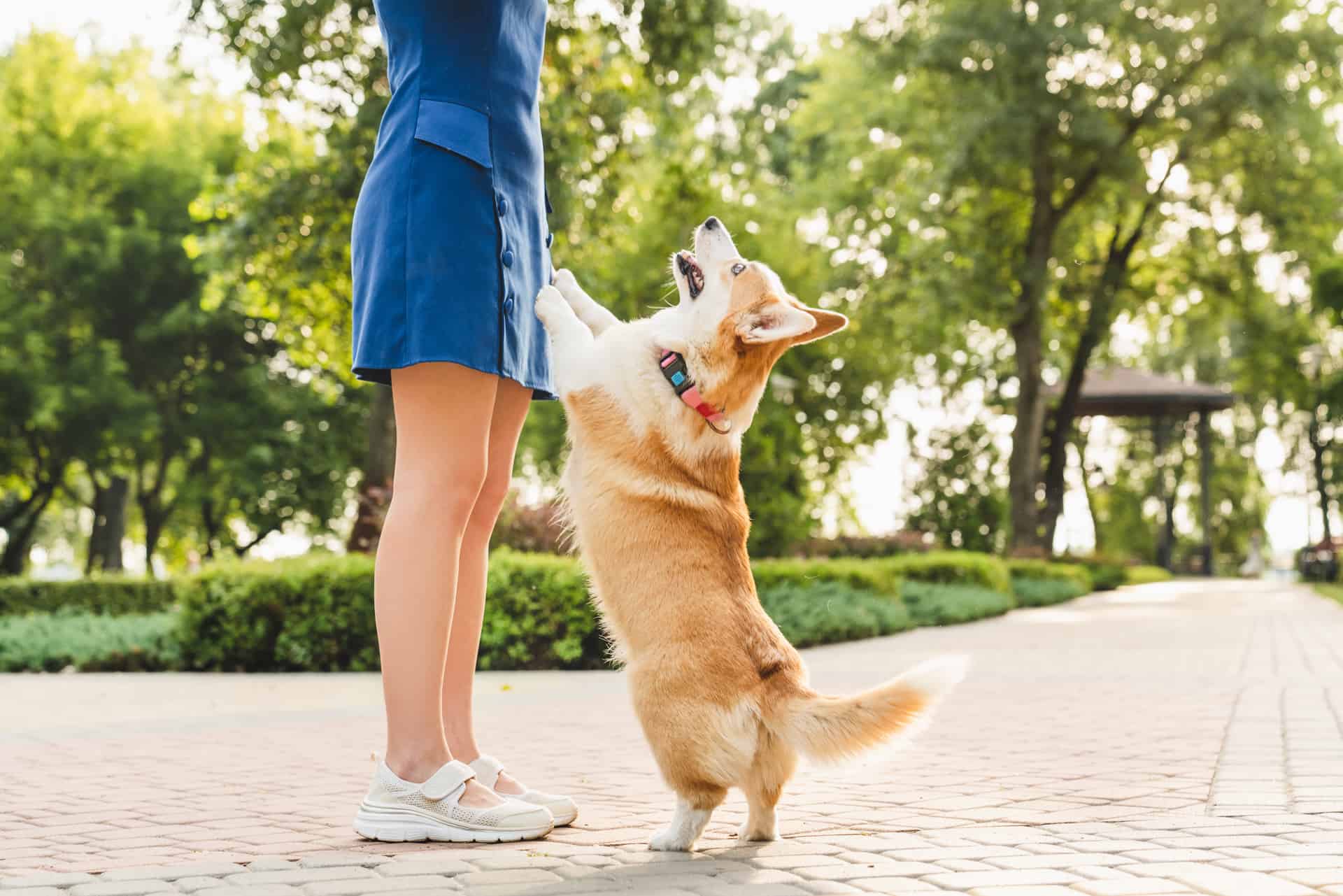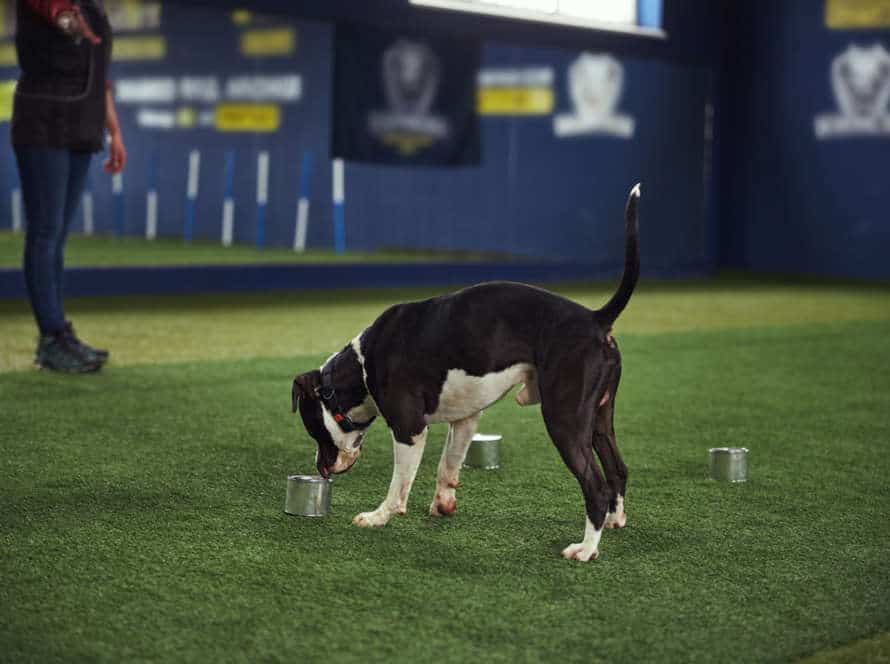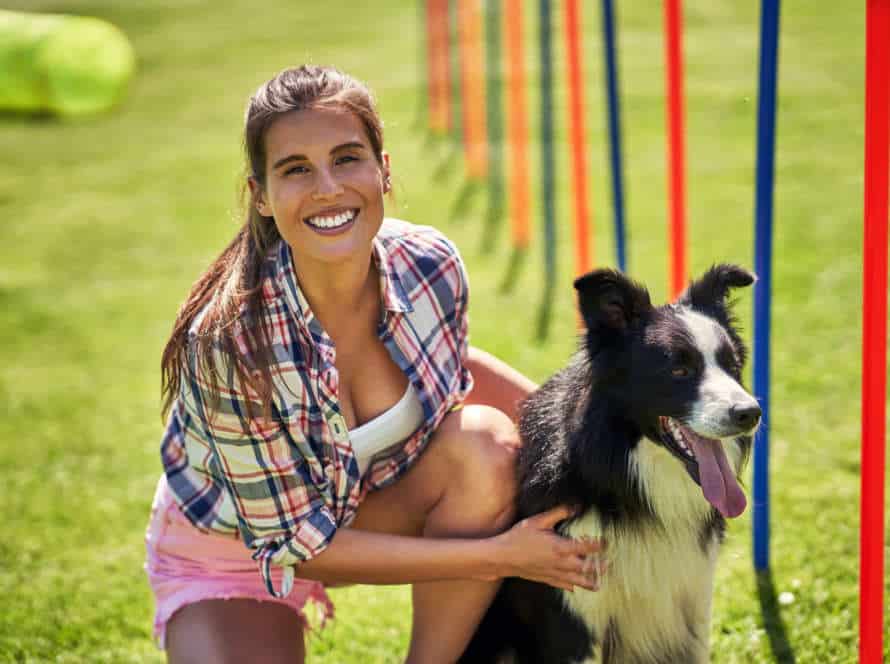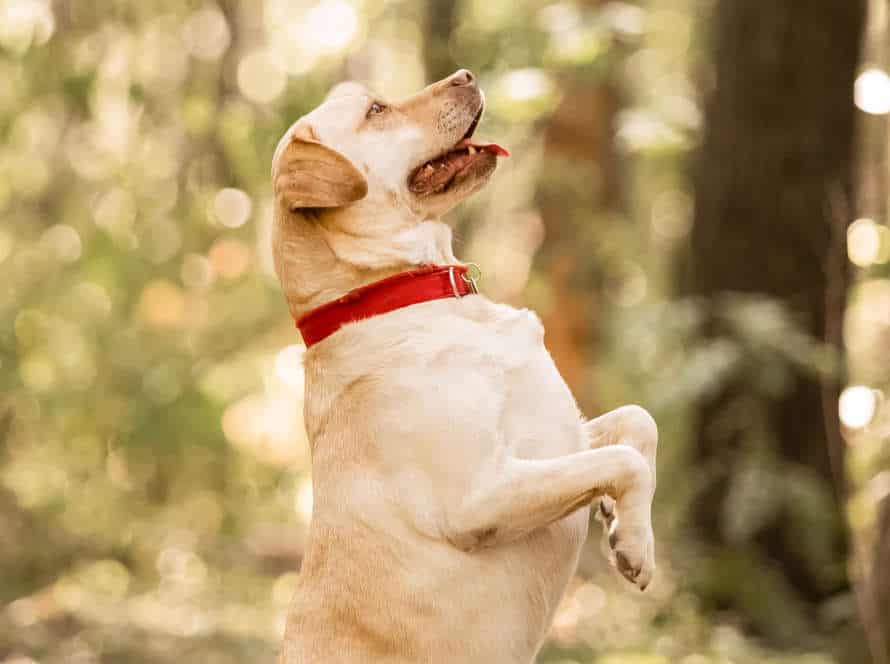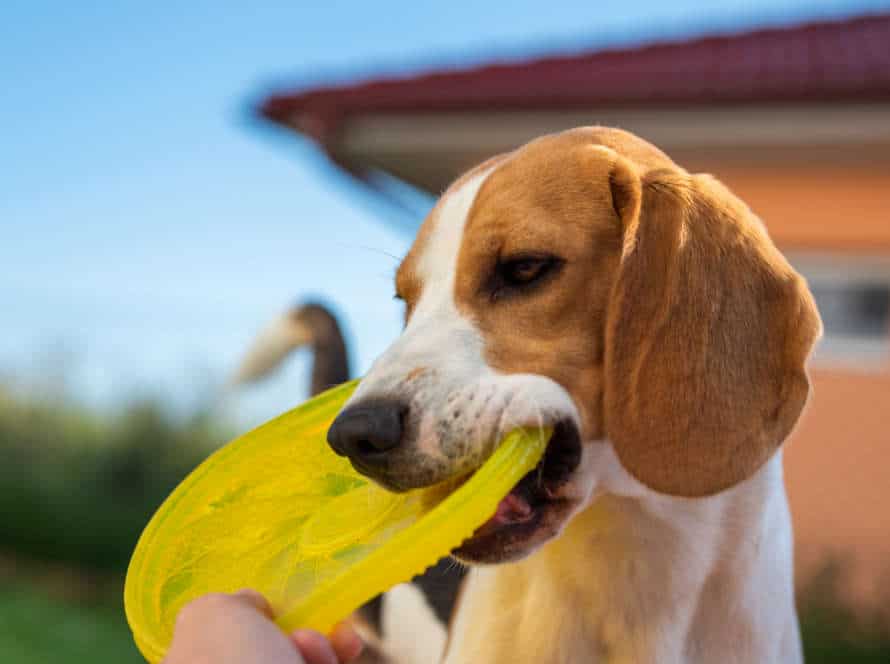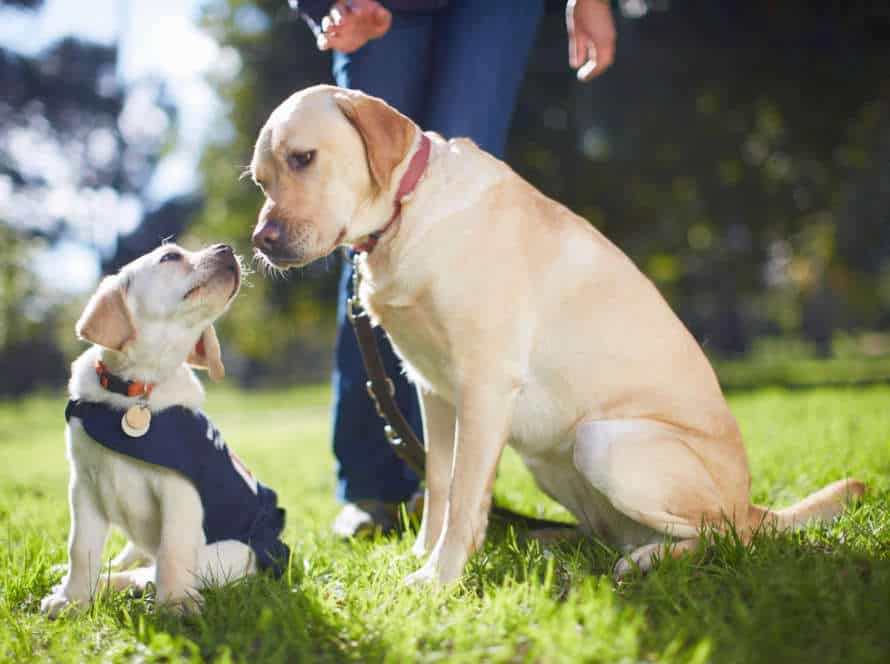Getting Started with Trick Training: Tips for Success
Trick training can be a blast! It’s a great way to make your pet-human bond even stronger. Here are some tips for a successful start:
- Begin with easy tricks, like Sit, Stay and Come.
- Use treats and kind words as rewards for good behavior.
- Break down the trick into small steps and teach them one at a time.
- Be patient and consistent. Train for short intervals only.
- Start in a quiet place and then add distractions as your pet gets better.
- Pro tip: Have fun and enjoy the journey! Trick training is an awesome way to bond and keep your pet mentally stimulated.
Basics of Trick Training
Trick training is an awesome way to bond with your pup and teach them obedience while having lots of fun! Patience is key. Make sure the training is positive and you give rewards. Here are the basics of trick training and the steps to take for success. Let’s get started!
- Start with basic obedience training – Before you begin teaching your dog any tricks, make sure they have mastered basic commands such as sit, stay, come, and down.
- Choose a trick to teach – Decide on a trick to teach your dog. Start with simple tricks such as shake, high-five, or roll over.
- Break it down into steps – Break the trick down into small steps and teach your dog one step at a time. For example, if you’re teaching your dog to roll over, start by getting them to lie down.
- Use positive reinforcement – Reward your dog with treats, praise, and playtime when they successfully complete a step towards learning the trick.
- Practice regularly – Practice the trick regularly and be patient. Your dog may take longer to learn some tricks than others.
- Generalize the trick – Once your dog has learned the trick, practice it in different locations and with different people to generalize the behavior.
- Have fun! – Remember, trick training should be fun for both you and your dog. Enjoy the process and celebrate your dog’s successes.
Understanding Your Dog’s Motivation
Unlocking your pup’s motivation is the key to successful trick training. Knowing what drives your pooch to learn and show off tricks will help you select the right training methods, and make the learning process more entertaining and rewarding for both you and your dog.
Here are some tips to help you identify and utilize your pet’s motivation:
- Test out different rewards, such as snacks, toys, or compliments, to discover what motivates your pup the most.
- Take note of your dog’s behavior during training sessions to see what they love doing and any patterns that appear.
- Stick to positive reinforcement techniques and stay away from punishment or negative feedback, which can reduce your dog’s motivation and zeal.
- Keep the training short and interesting, and gradually make the tricks harder as your dog becomes more self-assured and competent.
By knowing your dog’s motivation and working with it, you can form a strong bond with your furry friend and get remarkable results from trick training.
Setting Training Goals and Rewards
Trick training your pet is essential – set training goals and rewards!
First, decide which trick or behavior to teach. Then, break it down into smaller, achievable parts. Positive reinforcement using treats, praise, and play will help your pet understand. Increase difficulty gradually as your pet masters each step. Set achievable goals for each session and reward for success. Celebrate and make training fun and positive. Trick training is enjoyable for both you and your pet! Pro Tip: Keep it short and frequent, and end each session on a bright note to keep your pet motivated.
Finding the Right Training Environment
Creating a perfect environment for trick training your pup is essential. Here’s how:
- Start inside. Few distractions help pup focus.
- Keep sessions short; not more than 10-15 mins.
- Use positive reinforcement for good behavior. Reward with treats, toys or just praise.
- Gradually add distractions as pup gets better.
- End each session on a high. Even if you didn’t reach goals, pup will feel motivated & ready for the next one.
Tricks to Teach Your Dog
Dog trick training is a great way to make your bond with your pup stronger! It’s a fun activity for both of you. Decide which tricks you want to teach your dog. Commands like “sit” or “stay” are good to start with, or you could try a simple trick like shaking hands. Here’s some advice to help you succeed:
Simple Tricks (Sit, Stay, Come)
Teaching your pup simple tricks, such as Sit, Stay, and Come, can be a fun and rewarding activity for both of you! Here are some tips to get started:
- Begin with basic obedience training – ensure your dog knows the basics like Sit and Stay.
- Use positive reinforcement – give treats and praise when your pet does a trick correctly. This will motivate them to keep learning and trying new things.
- Training sessions should be brief and regular – dogs have short attention spans, so keep it brief and consistent.
- Be patient – learning new tricks takes time, so don’t get discouraged if your dog doesn’t pick it up right away.
By following these tips, you’ll have a trained pet who will do tricks on cue. Pro tip: always use positive reinforcement and make training an enjoyable experience!
Intermediate Tricks (Roll Over, Shake, High Five)
Trick training your pup is an awesome way to build a bond and get their brain working. Here are some tips to help you get started and make sure your pup succeeds:
- Begin with straightforward tricks your dog can understand and learn quickly, like Shake or High Five.
- Reward them with treats, verbal praise, and petting for doing the trick correctly.
- For complex tricks, break them up into small steps and reward your pup after each one before moving on to the next.
- Be patient and consistent – practice for short periods every day instead of long sessions once per week.
- Make training entertaining for your pup by speaking to them in a playful tone and mixing it up.
If you follow these tips, your dog will be rolling over, shaking, and high-fiving in no time!
Advanced Tricks (Jump Through Hoops, Play Dead, Spin)
Training your pup in cool tricks such as jumping through hoops, playing dead and spinning can be fun and rewarding for both you and your pup. Here are some tips:
- Jumping Through Hoops: Begin with a small hoop. Hold it on the ground. Encourage your pup to walk through with treats and words. Gradually rise the height of the hoop and move it away from the ground.
- Play Dead: Teach your pup to lie down using commands. Hold a treat near their nose and move it slowly towards the ground. As they follow the treat, their body will also follow, causing them to roll onto their side.
- Spin: Lure your pup in a circle with a treat held above their head. As they follow the treat, use a verbal cue such as “spin” and reward them with the treat once they finish the full circle.
Be patient and consistent. Use positive reinforcement to motivate and reward your pup for their progress.
Techniques for Successful Trick Training
Tricks are a great way to bond with your pet! With the right technique, teaching your pet tricks can be fun. Before you get started, here’s some advice:
- Keep it enjoyable.
- Help build your pet’s confidence.
- Work on problem-solving skills.
Happy training!
Positive Reinforcement
Positive reinforcement is a great way to train your pet tricks. Reward them with treats, praise or playtime when they behave well or obey a command. Here are some tips to help you:
- Start with basic tricks, like hand targeting or sit.
- Use yummy treats like cheese or meat as motivation.
- Keep training short, frequent and consistent.
- Reward your pet straight away for desired behaviour.
- Be patient and use positive reinforcement regularly.
Pro tip: Every pet is different, so be flexible and adjust your methods if needed for the best results.
Clicker Training
Clicker training is a great way to teach tricks to dogs and other animals. Here’s how it works:
- Start with a simple trick like ‘sit’ or ‘touch’.
- Use a clicker and reward the desired behavior.
- Keep repeating until the animal understands the clicker means a treat.
- Gradually progress to more complex tricks.
- Be consistent. Only reward the behavior you want.
With patience, clicker training can be rewarding for both you and your pet. Pro tip – Make training sessions short and positive.
Capturing vs Shaping vs Luring
When it comes to trick training, there are three methods: capturing, shaping and luring. Let’s look at how they differ and how to decide which to use.
Capturing means waiting for your pet to do the desired action, then rewarding them. For example, if you want to teach a dog to shake hands, wait for them to lift their paw, then give a treat. The dog will start doing it more often, so you can add a verbal cue.
Shaping is breaking the trick into small steps, rewarding each step and making it harder until they can do the whole thing. Say you want a bird to wave hello. First reward them for lifting their foot. Then reward them for lifting and waving, and so on.
Luring is using a toy or treat to guide them into the right action. If you want your cat to sit, hold a treat above their head. They’ll sit, to try and see the treat. Later, add a verbal cue, and stop using the treat.
These techniques will help you choose the right method for your pet and have a successful training session.
Troubleshooting Common Training Challenges
Beginning with trick training for your pup? Obstacles are frequently seen. To be successful, you must know how to fix these struggles. Today, we’ll chat about various regular training predicaments and tips on conquering them. Let’s rock ‘n’ roll!
Lack of Engagement
Struggling with engagement during training? No worries! Here are a few tricks to get your pup more involved:
- Discover and use high-value rewards. What does your pup love? Treats? Toys? Offer those up when they do good!
- Make training fun! Incorporate games to keep your pup interested.
- Keep it short and sweet. Dogs have short attention spans, so try to keep training sessions short and focused.
- Positive reinforcement. Reward your pup for good behavior. Punishing bad behavior doesn’t work as well.
- Be patient. Training requires time and consistency. Make sure you stay positive and reward the good stuff!
Inconsistent Behavior
Inconsistent behavior is a challenge in trick training. To succeed, use positive reinforcement and a plan. Here are some tips:
- Start simple and work up.
- Break down each trick into steps and practice them separately.
- Use treats, praise and other rewards to reinforce good behavior and make it repeat.
- Be patient and consistent with the training. Keep it short every day.
- Don’t scold your dog for not performing a trick. This can lead to confusion and frustration.
- Be consistent and use positive reinforcement. Your dog can learn fun and impressive tricks.
Frustration or Aggression
Frustration and aggression can pop up during trick training. This is sometimes due to confusion or boredom. Here are some tips on how to deal with it:
- Ensure your pet is well-fed and rested before starting.
- Break down the trick into smaller, easier steps.
- Reward progress and use positive reinforcement.
- Keep training short and exciting.
- If your pet gets aggressive, stop and consider getting help from a pro.
Keep in mind that each pet is different and requires different approaches. Be patient, stay positive and have fun!
Tips for Taking Your Trick Training to the Next Level
Trick training is a wonderful way to increase your connection with your pup and keep them learning. It will also help your dog become more independent and confident. Use these tips to take your trick training to the next level!
To take your trick training to the next level, remember to:
- Give clear instructions.
- Use positive reinforcement.
- Make it fun and enjoyable.
- Take it slow and steady.
- Break down tricks into simple steps.
Enrolling in a Group Class or Workshop
If you want to take your pup’s trick training to the next level, a group class or workshop is the answer! Here are some helpful tips to know before signing up:
- Check reviews and research trainers or training centers in your area. Pick one that’s experienced and reputable.
- Choose a class or workshop that fits your pup’s skill level and interests.
- Look at the class size and find out if you and your pup will get individual attention.
- Brush up on basic obedience commands so your pup can join in group activities easily.
- Be patient with your pup’s learning and use positive reinforcement to motivate them.
Pro Tip: Practice regularly with your pup to make sure they remember what they learn and to strengthen your bond.
Entering Competitions or Shows
Competitions or shows can be a great way to boost your pet’s trick training and show off their skills. Here are some tips:
- Research competitions that match your pet’s talents and interests. Look for events with categories for trick training.
- Get training early and keep on it. Build a strong base of basic obedience and add more challenging tricks.
- Practice in a place without distractions to help your pet stay focused and reduce stress.
- Focus on quality, not quantity. It’s better to do fewer tricks perfectly than to try too many and make mistakes.
- Work with a professional trainer or attend workshops to improve your training and learn from experienced competitors.
With practice and dedication, you and your pet can wow the judges and win a prize. Good luck! Pro Tip: Have fun and enjoy the experience with your pet!
Learning New Tricks From Professional Trainers
Gain pro know-how! Learn fresh tricks from professional trainers to upgrade your trick training. Follow these tips to get more out of your sessions:
- Observe pros. Check out videos, seminars, workshops & books by experts to learn new methods and tricks.
- Break it down. Don’t be too hasty – teach one component at a time and reward your pet with verbal encouragement.
- Practice often. Improve timing, consistency & bonding. Be patient & always use positive reinforcement.
- Go for quality. Master one trick before moving on. Quality practice is key.
- Have fun! Enjoy the process & bond with your pet. The shared joy makes it all worthwhile.
Frequently Asked Questions
Q: What is trick training?
A: Trick training is teaching your pet to perform specific actions on command, such as rolling over, spinning, or even giving a high-five.
Q: Why should I train my pet to do tricks?
A: Trick training can provide mental stimulation and exercise for your pet, as well as strengthen the bond between you and your furry friend.
Q: How do I start trick training?
A: Start with simple tricks and use positive reinforcement, such as treats or praise. Break the trick down into small steps and gradually build up to the full trick.
Q: What kind of equipment do I need for trick training?
A: You don’t need any special equipment to train your pet tricks, but having a clicker, treats, and a designated training area can be helpful.
Q: How long does it take to train a pet to do tricks?
A: The amount of time it takes to train a pet to do tricks varies depending on the individual animal and the complexity of the trick. Consistency and patience are key.
Q: Can any pet learn to do tricks?
A: Yes, any pet can learn to do tricks with proper training and patience. However, some animals may be more receptive to trick training than others.

